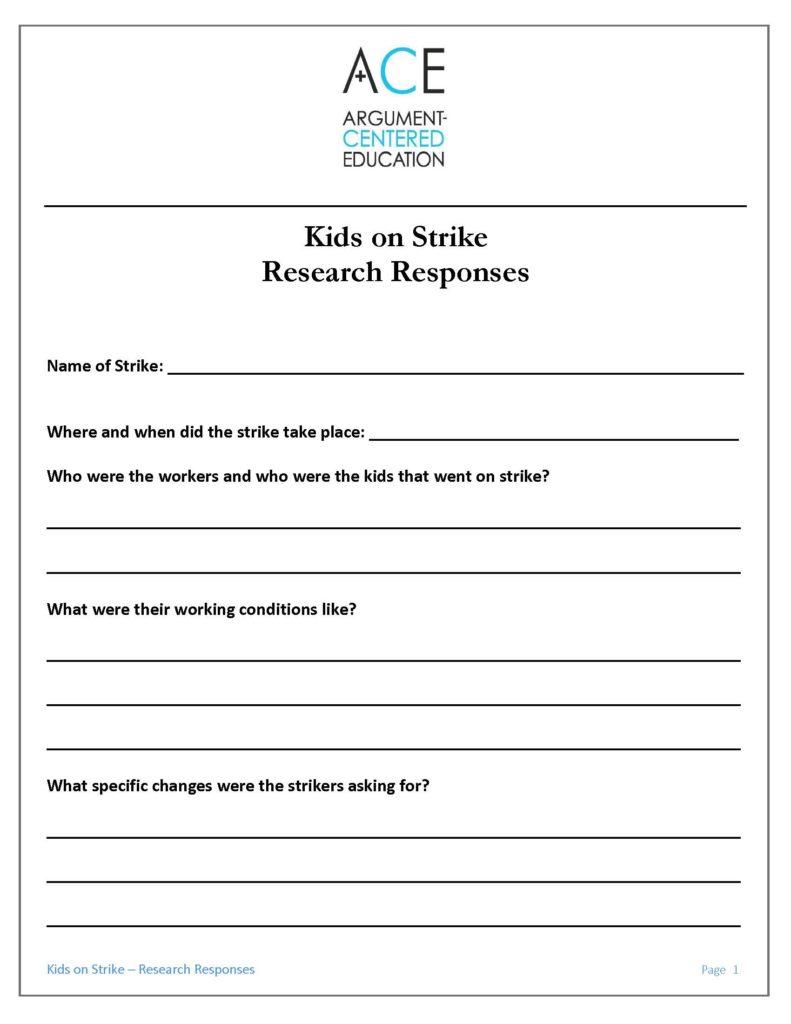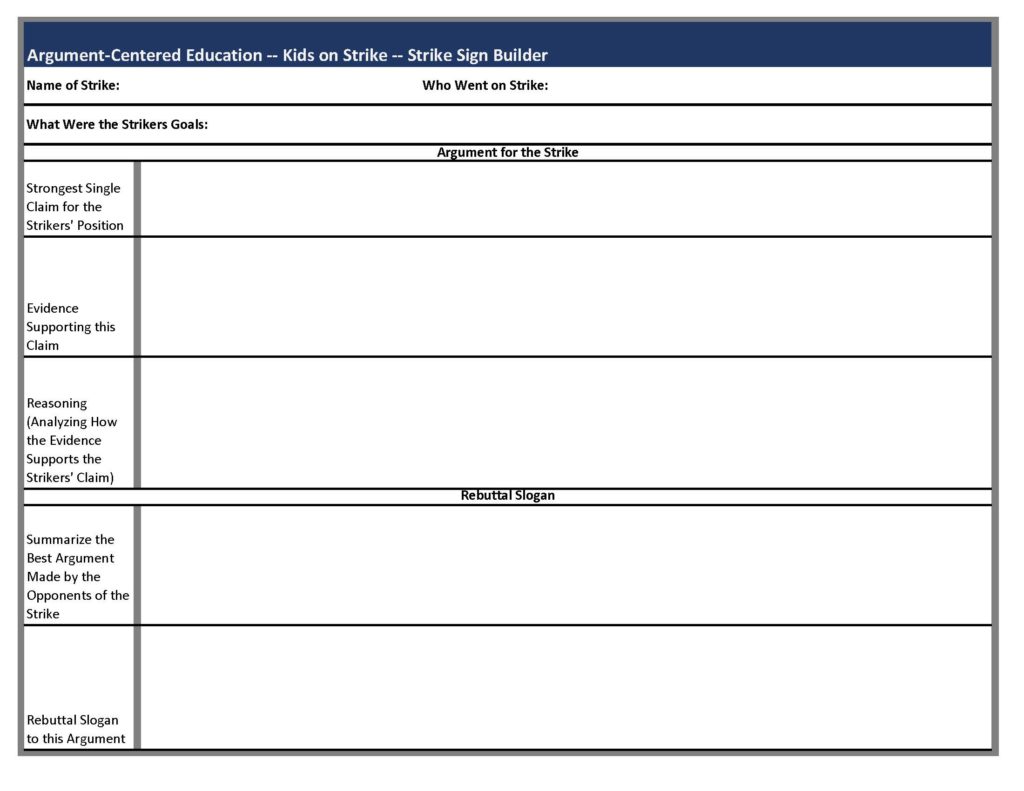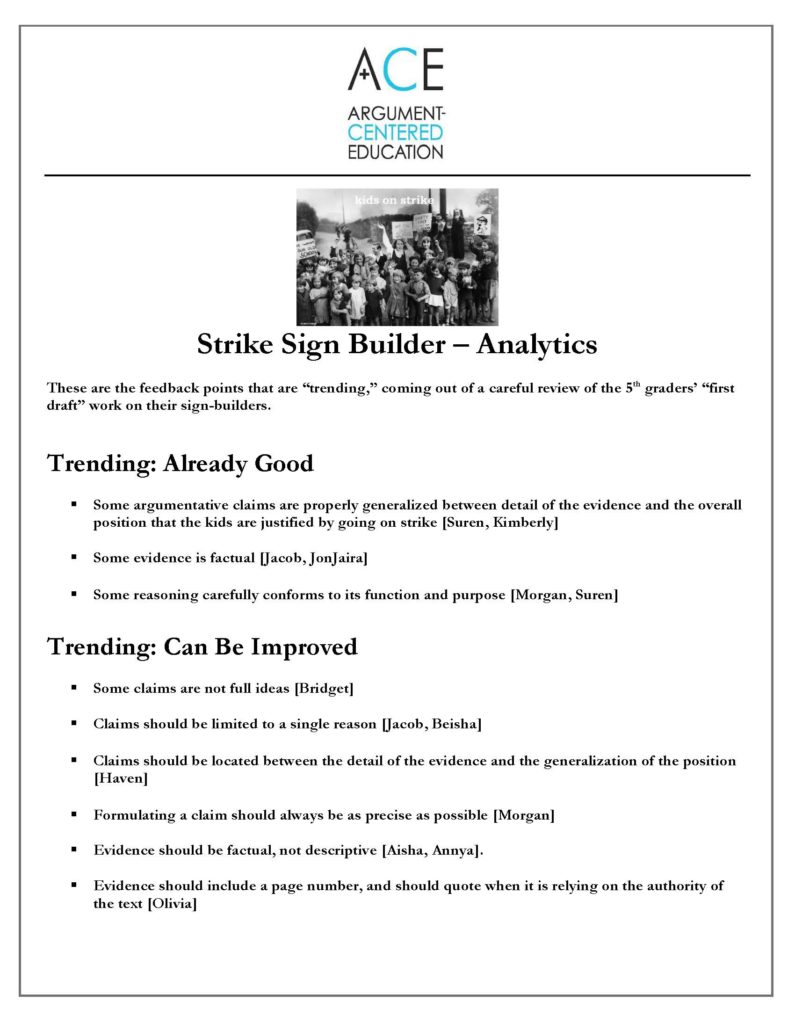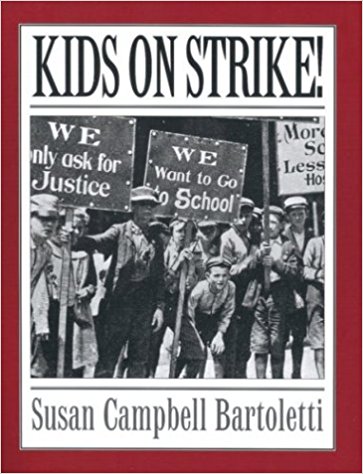
Kids on Strike, Strike Signs, and Analytic Feedback
Vivian Leventis is an expert middle school teacher at one of our partner schools, the Helen C. Peirce School of International Studies. She developed a social studies unit called “Kids on Strike” that is being implemented at the school this fall. The unit is built around Susan Bartoletti’s 2003 study of the largely forgotten history of the extensive child industrial labor in the U.S. in the late 19th and early 20th centuries (at its height, more than 2 million children worked in manufacturing jobs), and the movement to organize child labor to protect kids’ rights, health, and safety.
Students were assigned one of the seven kids strikes profiled in Bartoletti’s history to read about and research. They completed an argument-based set of research questions.

They have completed “sign builders” in advance of creating their own strike signs, with compact, evidence-based arguments and slogans for their cause and responding to owners’ counter-arguments against the strikers.

Students will be presenting in a jigsaw format, with four tables, one representative from each of the seven kids’ strikes presenting to each other their research findings. While jigsawing, students will be completing their peer evaluation forms on what they have heard from each group.

And they will be assessed on their sign builder and sign using the attached stand-alone assessment rubric.

Students have been working on their strike sign builders, and they turned in their work recently for formative assessment. Ms. Leventis and I carefully reviewed the first-draft sign builders that her students completed, and we created these “quick form” analytics. These are the feedback points that we found to be “trending” (were patterns of student writing), coming out of our careful review and analysis. They are “quick form” because they contain only the bulleted feedback points, with the name of the student whose work contains an illustration of the point.

Ms. Leventis and I presented these analytics recently. The students were engaged throughout and appeared to be learning the means by which they can revise and upgrade their argumentation and their writing. One useful sub-strategy we employed: for several of the “trending: can be improved,” we asked students to quick-write their revisions right then and there, every student thinking through their revision, and then sharing out. We also, just because this sequencing seemed to fit better in this instance, began with “trending: can be improved” and then went to “trending: already good.”


